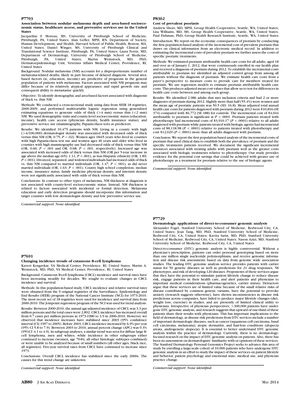Changing Incidence Trends of Cutaneous B-Cell Lymphoma
May 2014
in “
Journal of The American Academy of Dermatology
”

TLDR The number of new cases of cutaneous B-cell lymphoma has leveled off since the early 2000s, and survival rates have improved since 1973.
The document reports on a population-based study examining the incidence and survival rates of cutaneous B-cell lymphoma (CBCL) using data from the Surveillance, Epidemiology and End Results (SEER) program of the National Cancer Institute for the years 1973-2010. The study found that the annual age-adjusted incidence of CBCL was 3.3 per million persons between 2000-2010, with a total of 2,892 cases. The incidence of CBCL increased from 0.7 cases per million persons in 1973-1980 to 3.9 in 2006-2010. However, the increase in incidence stabilized since 2003, with an annual percent change of 0.3% from 2003 to 2010. Subgroup analyses showed similar trends for diffuse large B-cell lymphoma, men, and whites, while other subgroups either continued to increase or had too few cases for analysis. The five-year survival rates from CBCL have continued to increase since 1973. The study concludes that the overall incidence of CBCL has stabilized since the early 2000s, but the reasons for this change in trend are unknown. No commercial support was identified for this study.






